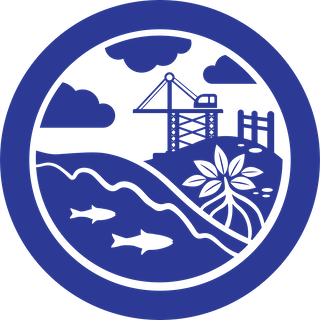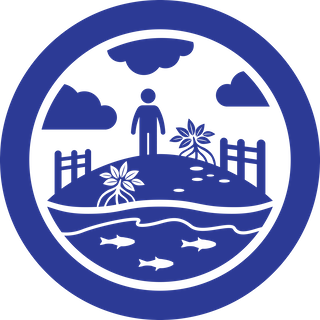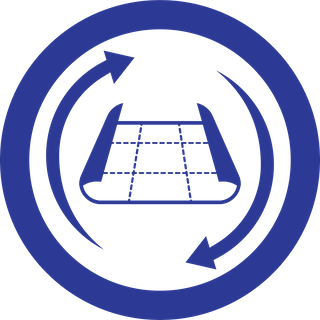Difference between revisions of "ICZM in Indonesia"
(Tag: Visual edit) |
(Tag: Visual edit) |
||
| Line 1: | Line 1: | ||
{{English-Bahasa-box|english_link= ICZM in Indonesia | indonesian_link= ICZM di Indonesia}} | {{English-Bahasa-box|english_link= ICZM in Indonesia | indonesian_link= ICZM di Indonesia}} | ||
| + | Coastal resources in Indonesia are used by the local communities for obtaining food, fodder, fuelwood, shelter and a variety of other services. With high biological diversity and endemism, coastal zones are used as repositories for the effluent of industrial processes and domestic wastes and also as prime sites for reclamation to create land for industry, agriculture, and settlement. In areas such as Java, the expansion of large cities disturb the coastal zone. Indonesia’s population is increasing at an alarming rate and will be 270 million in 2020 and so demographic pressures are pronounced more in Indonesia. About 64% of Indonesian people live in and around the coastal areas.<ref>Sukardjo S. (1999) Integrated Coastal Zone Management (ICZM) in Indonesia. In: Salomons W., Turner R.K., de Lacerda L.D., Ramachandran S. (eds) Perspectives on Integrated Coastal Zone Management. Environmental Science. Springer, Berlin, Heidelberg</ref> | ||
| + | |||
| + | ====== '''Coastal Zone Problems in Indonesia''' ====== | ||
| + | The consequences of coastal exploitation in Indonesia are very complex. The key resource use problems and conflicts in the coastal zone in Indonesia include • loss of mangrove forest and tidal swamplands which support traditional fisheries, • improper utilization of coastal zone by "money holders" (not coastal inhabitant - example conversion of mangrove forest for Tambak), • declining socio-economic livelihood status of the already poor inhabitants of coastal villages, • increasing coastal population, • overfishing and use of destructive methods, • lack of comprehensive ecological information concerning the coastal zone/resources for developers an~ decision-makers at the provincial level, • the relevance of agricultural policy for income and food security<ref>Sukardjo S. (1999) Integrated Coastal Zone Management (ICZM) in Indonesia. In: Salomons W., Turner R.K., de Lacerda L.D., Ramachandran S. (eds) Perspectives on Integrated Coastal Zone Management. Environmental Science. Springer, Berlin, Heidelberg</ref>. | ||
| − | + | The concept of ICZM has been known in international forums since 1992. Almost in most international conventions on marine and environmental management recommend the use of the ICZM concept in the management of marine resources and other marine activities. Much success has been achieved by coastal countries in the world in implementing the ICZM concept. It is therefore appropriate for Indonesia to apply the ICZM concept as an alternative solution to the problems it faces in the management of marine and coastal resources and other activities in the marine sector.<ref>http://oseanografi.lipi.go.id/dokumen/oseana_xxxi(1)21-26.pdf</ref> | |
| − | |||
| − | |||
| − | |||
| − | + | ====== The Integrated Coastal Zone Management (ICZM) for the Northern Coast of Central Java ====== | |
| + | In March 2019 the Integrated Coastal Zone Management (ICZM) for the Northern Coast of Central Java, Indonesia started. The project started introducing Central Java Province (CJP) to the concepts of ICZM and understanding the coastal issues, the mechanisms and tools to influence these mechanisms. Also it was guiding the province in the process of becoming a competent authority leading ICZM in Central Java so they can exercise their mandate on this matter. Unfortunately the global pandemic has halted the project while it was entering its second year. | ||
| − | + | To make sure that the content and lessons learned within the project are not lost it was decided to make a final content report. This report is not based on new research, except for some spatial plan and legal tools analysis. It shows international ICZM perspectives, summarizes the findings on the coastal problems and bottlenecks within the project and gives conclusions and recommendations. | |
| + | The table of content below is based on the Integrated Coastal Zone Management Final (concept) content report<ref>Victor Coenen (Witteveen+Bos), Susan Arts and Jaap de Heer (TwynstraGudde) and Mugy Grimwaldy (Bita Bina Semesta) Date 21-9-2021</ref> with additional extra resources. | ||
==== Table of Content ==== | ==== Table of Content ==== | ||
| Line 29: | Line 32: | ||
==== Acknowledgements ==== | ==== Acknowledgements ==== | ||
| − | + | ===Research/Publications === | |
| − | |||
| − | |||
| − | |||
| − | |||
| − | |||
| − | |||
| − | |||
| − | |||
| − | |||
| − | |||
| − | |||
| − | |||
| − | |||
| − | |||
| − | |||
| − | |||
| − | |||
| − | |||
| − | |||
| − | |||
| − | |||
| − | |||
| − | |||
| − | |||
| − | |||
| − | |||
| − | |||
| − | |||
| − | |||
| − | |||
| − | |||
| − | |||
| − | |||
| − | |||
| − | |||
| − | |||
| − | |||
| − | |||
| − | |||
| − | |||
| − | |||
| − | |||
| − | |||
| − | |||
| − | |||
| − | |||
| − | |||
| − | |||
| − | |||
| − | |||
| − | |||
| − | |||
| − | |||
| − | |||
| − | |||
| − | |||
| − | |||
| − | |||
| − | |||
| − | |||
| − | |||
| − | |||
| − | |||
| − | |||
| − | |||
| − | |||
| − | |||
| − | |||
| − | |||
| − | |||
| − | |||
| − | |||
| − | |||
| − | |||
| − | |||
| − | |||
| − | |||
| − | |||
| − | === Research/Publications === | ||
[https://www.researchgate.net/publication/32157545_Integrated_Coastal_Zone_Management_ICZM_in_Indonesia_A_View_from_a_Mangrove_Ecologist Integrated Coastal Zone Management in Indonesia: A View from a Mangrove Ecologist] | [https://www.researchgate.net/publication/32157545_Integrated_Coastal_Zone_Management_ICZM_in_Indonesia_A_View_from_a_Mangrove_Ecologist Integrated Coastal Zone Management in Indonesia: A View from a Mangrove Ecologist] | ||
Revision as of 07:54, 29 September 2021
| |
Coastal resources in Indonesia are used by the local communities for obtaining food, fodder, fuelwood, shelter and a variety of other services. With high biological diversity and endemism, coastal zones are used as repositories for the effluent of industrial processes and domestic wastes and also as prime sites for reclamation to create land for industry, agriculture, and settlement. In areas such as Java, the expansion of large cities disturb the coastal zone. Indonesia’s population is increasing at an alarming rate and will be 270 million in 2020 and so demographic pressures are pronounced more in Indonesia. About 64% of Indonesian people live in and around the coastal areas.1
Contents
Coastal Zone Problems in Indonesia
The consequences of coastal exploitation in Indonesia are very complex. The key resource use problems and conflicts in the coastal zone in Indonesia include • loss of mangrove forest and tidal swamplands which support traditional fisheries, • improper utilization of coastal zone by "money holders" (not coastal inhabitant - example conversion of mangrove forest for Tambak), • declining socio-economic livelihood status of the already poor inhabitants of coastal villages, • increasing coastal population, • overfishing and use of destructive methods, • lack of comprehensive ecological information concerning the coastal zone/resources for developers an~ decision-makers at the provincial level, • the relevance of agricultural policy for income and food security2.
The concept of ICZM has been known in international forums since 1992. Almost in most international conventions on marine and environmental management recommend the use of the ICZM concept in the management of marine resources and other marine activities. Much success has been achieved by coastal countries in the world in implementing the ICZM concept. It is therefore appropriate for Indonesia to apply the ICZM concept as an alternative solution to the problems it faces in the management of marine and coastal resources and other activities in the marine sector.3
The Integrated Coastal Zone Management (ICZM) for the Northern Coast of Central Java
In March 2019 the Integrated Coastal Zone Management (ICZM) for the Northern Coast of Central Java, Indonesia started. The project started introducing Central Java Province (CJP) to the concepts of ICZM and understanding the coastal issues, the mechanisms and tools to influence these mechanisms. Also it was guiding the province in the process of becoming a competent authority leading ICZM in Central Java so they can exercise their mandate on this matter. Unfortunately the global pandemic has halted the project while it was entering its second year.
To make sure that the content and lessons learned within the project are not lost it was decided to make a final content report. This report is not based on new research, except for some spatial plan and legal tools analysis. It shows international ICZM perspectives, summarizes the findings on the coastal problems and bottlenecks within the project and gives conclusions and recommendations.
The table of content below is based on the Integrated Coastal Zone Management Final (concept) content report4 with additional extra resources.
Table of Content

|

|

|
|---|---|---|
| 5. Analysis of coastal problems and bottlenecks | 6. Conclusions and recommendations |
Acknowledgements
Research/Publications
Integrated Coastal Zone Management in Indonesia: A View from a Mangrove Ecologist
Integrated Coastal Zone Management in Indonesia
References
- ↑ Sukardjo S. (1999) Integrated Coastal Zone Management (ICZM) in Indonesia. In: Salomons W., Turner R.K., de Lacerda L.D., Ramachandran S. (eds) Perspectives on Integrated Coastal Zone Management. Environmental Science. Springer, Berlin, Heidelberg
- ↑ Sukardjo S. (1999) Integrated Coastal Zone Management (ICZM) in Indonesia. In: Salomons W., Turner R.K., de Lacerda L.D., Ramachandran S. (eds) Perspectives on Integrated Coastal Zone Management. Environmental Science. Springer, Berlin, Heidelberg
- ↑ http://oseanografi.lipi.go.id/dokumen/oseana_xxxi(1)21-26.pdf
- ↑ Victor Coenen (Witteveen+Bos), Susan Arts and Jaap de Heer (TwynstraGudde) and Mugy Grimwaldy (Bita Bina Semesta) Date 21-9-2021


